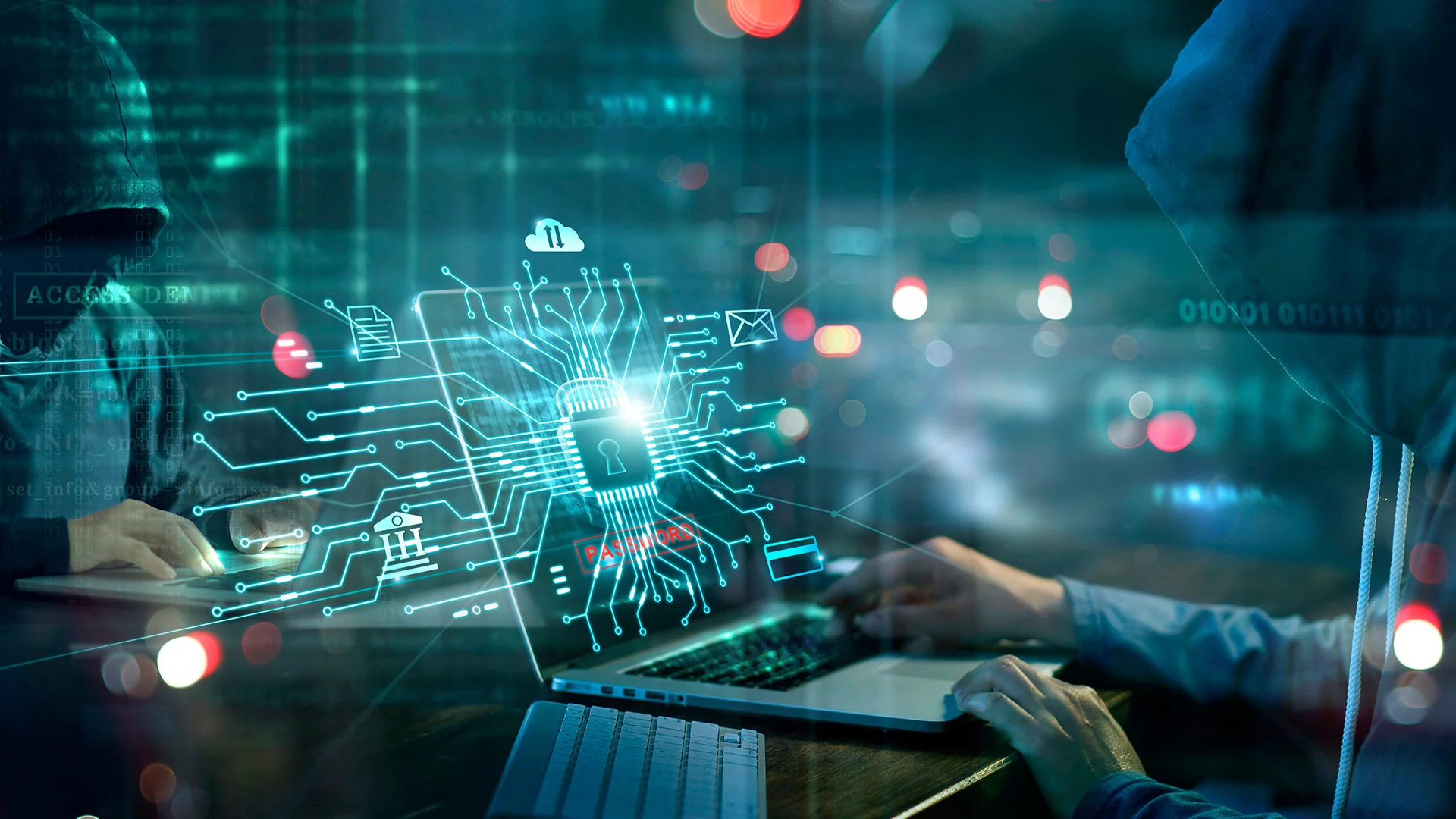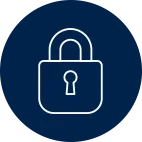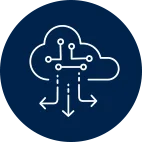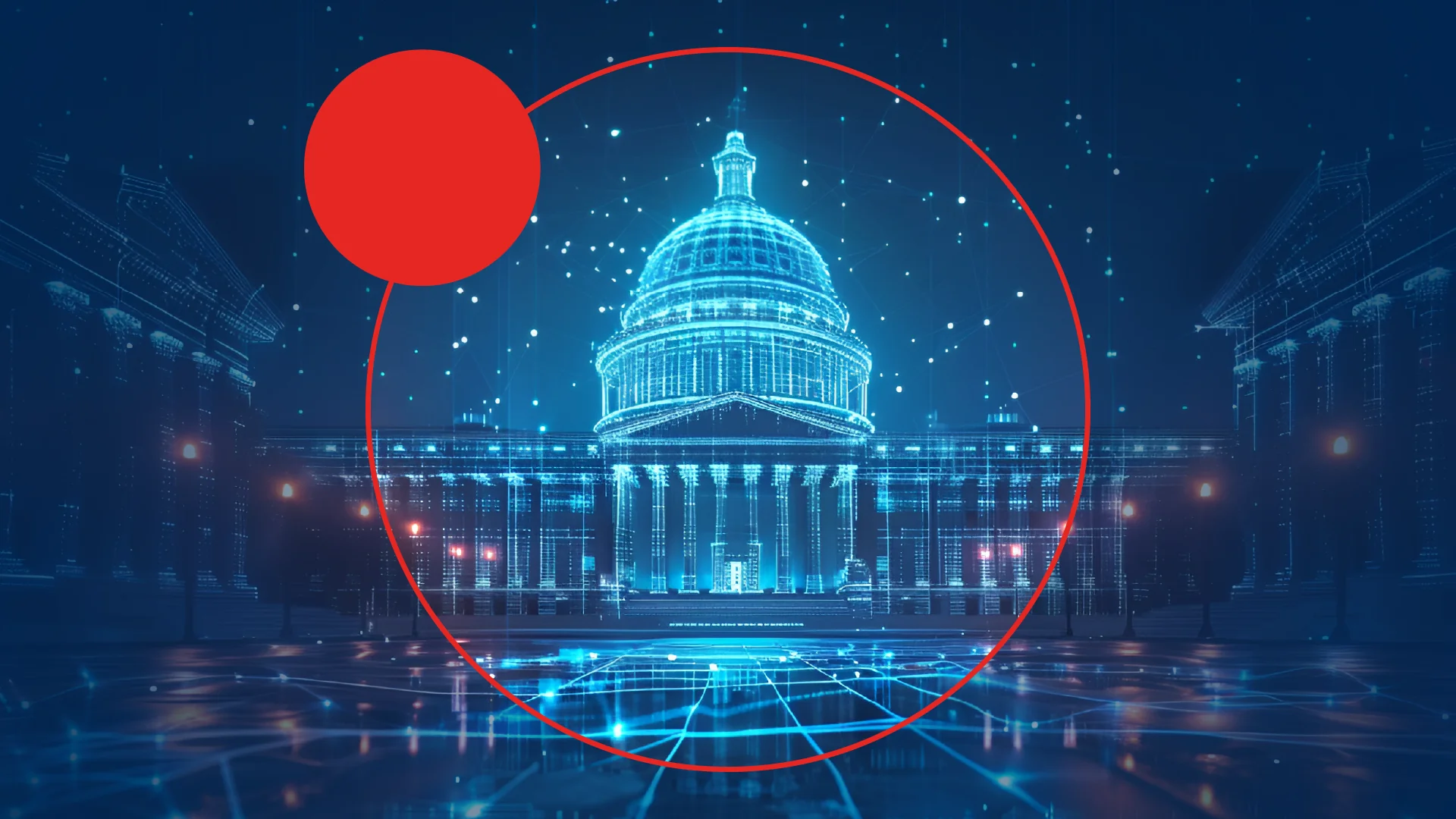Introduction
Consider the recent massive Microsoft Office 365 global cyber outage, impacting millions of customers in government agencies, airlines, banking, and health care globally, all caused by a defective CrowdStrike Falcon software upgrade. With this event, it is now even more readily apparent that there is a compelling need to assess the interoperability of systems and enhance cyber resiliency in the public and private sectors worldwide. According to Cybersecurity Ventures, the global damages from cybercrime in 2023 was 8 trillion dollars and is expected to rise to $9.5 Trillion in 2024 and to over $10.5 Trillion in 2025. With the continual expansion of digital technologies, artificial intelligence (AI), and quantum computing in both the public and private sectors worldwide, there has been significant growth in cyber vulnerabilities leading to increased cyber-attacks by organized criminal cyber-attack groups, Nation-State (China, Russia, Iran, & North Korea) cyber-attack groups, and cyber hacktivists. These include the SolarWinds supply-chain cyber-attack, the various Microsoft platform based cyber-attacks, and the numerous ransomware cyber-attacks against many government agencies nationwide.

As a result, cybersecurity leaders in both the public and private sectors are struggling to defend their valuable data assets, ensure data privacy, and provide cyber resiliency from malicious cyber-attacks worldwide. During the past 15 years, an exponential growth in demand for cybersecurity talent has emerged, resulting in a global talent shortage. It is estimated that there are over 3.5 million available cybersecurity jobs worldwide, with over 500,000 available cybersecurity jobs in the U.S., and the demand for cyber professionals continues to grow, outpacing the talent supply, according to CyberSeek. Thus, the Chief Information Security Officer (CISO) role has become increasingly important and challenging in the public and private sectors worldwide. This article will discuss the top ten global cybersecurity leadership challenges and proven, effective best practices to enhance cybersecurity in the U.S. and internationally. Awareness of these challenges and these practices can help organizations overcome the gap in cybersecurity talent by making better use of the staff who are available.
Top Ten Global Cybersecurity Leadership Challenges

 Global Shortage Of Cybersecurity Talent
Global Shortage Of Cybersecurity Talent

Lack Of Cybersecurity-By-Design Architecture For Legacy Information Technology (IT) Infrastructure
 Unrealistic Cybersecurity Expectations By C-Suite And Senior Executives
Unrealistic Cybersecurity Expectations By C-Suite And Senior Executives
Too often, the organizations’ senior executive leadership lacks the understanding or genuine appreciation of the significance of cybersecurity challenges, potential cyber risks, and possible cyber damages that the organization faces, resulting in inadequate cybersecurity funding and a lack of resources for appropriate cybersecurity education, cyber staffing, cybersecurity tools, and managed cybersecurity services.
 Over-Dependence On Cybersecurity Risk And Compliance Frameworks
Over-Dependence On Cybersecurity Risk And Compliance Frameworks
 Failures Of Perimeter-Based Data Security
Failures Of Perimeter-Based Data Security
 Continued Growth Of The Cyber-Attack Surface Area
Continued Growth Of The Cyber-Attack Surface Area
 Lack Of Interoperability Of IT Systems, Poor Systems Integration, And Lack Of Security Orchestration Of Cybersecurity Software And Tools
Lack Of Interoperability Of IT Systems, Poor Systems Integration, And Lack Of Security Orchestration Of Cybersecurity Software And Tools
 Lack Of Focus On Cyber Threat Intelligence To Drive Cyber Defense Planning
Lack Of Focus On Cyber Threat Intelligence To Drive Cyber Defense Planning
 Lack Of Persistent Cybersecurity Education, Training, And Simulations
Lack Of Persistent Cybersecurity Education, Training, And Simulations
Cybersecurity is a dynamic technology area that is continually changing with new, emerging technologies and constantly evolving global cyber threats. CISOs face the challenge of effectively mitigating the risk posed by human error and malicious insider threats, while simultaneously fostering a culture of security awareness and empowering employees to actively protect organizational assets. Thus, cybersecurity education and training should be ongoing, not just once a year. Cybersecurity awareness education and training should be provided from the top down in every organization worldwide. Cybersecurity analysts should be trained via advanced cyber ranges using emulated networks and continuously simulated cyber-attack scenarios.
 Perception That CISOS Are Being Used As Scapegoats
Perception That CISOS Are Being Used As Scapegoats
Top Ten Global Cybersecurity Best Practices
Our experience has led us to develop the following list of the top ten global cybersecurity leadership best practices to address the previously stated top ten global cybersecurity challenges and enable CISOs worldwide to improve data privacy, data security, and cyber resiliency:
 1. Hire The Best Cybersecurity Talent (Addresses the cyber challenge: Global Shortage Of Cyber Talent)
1. Hire The Best Cybersecurity Talent (Addresses the cyber challenge: Global Shortage Of Cyber Talent)
While this may sound easy, it is often challenging because of the high demand for cybersecurity talent worldwide. The average annual salary of a cybersecurity professional in the U.S. is $105,000, with top Global CISOs being paid over a million dollars a year, according to research by Trend Micro. Finding, hiring, training, upskilling, and retaining top cybersecurity talent is essential to enhancing an organization’s data privacy, integrity, and cyber resiliency. Because of the global shortage of cyber resources, many organizations are leveraging the cyber talent and capabilities of managed security services providers (MSSPs) who provide a wide range of cybersecurity support services to numerous customers worldwide.
 2. Leverage The Power Of Artificial Intelligence (AI) To Assist Cybersecurity Professionals (Addresses the cyber challenges: Global Shortage of Cyber Talent, Failures of Perimeter-based Security, and Lack of Persistent Cybersecurity Education, Training, and Simulations)
2. Leverage The Power Of Artificial Intelligence (AI) To Assist Cybersecurity Professionals (Addresses the cyber challenges: Global Shortage of Cyber Talent, Failures of Perimeter-based Security, and Lack of Persistent Cybersecurity Education, Training, and Simulations)
As a result of the tremendous growth and popularity of third-generation self-learning AI and machine learning (ML) technologies like ChatGPT and many others, it is vital to leverage these exciting emerging technologies to enhance cybersecurity services, perform time-consuming cyber operations, and reduce costs. Many organizations, such as the USCYBERCOM, U.S. ARMY CYBER COMMAND, and DHS/CISA use AI/ML software to increase the speed of cyber incident detection; enhance cyber threat hunting; automate cyber incident response to known cyber-attack tactics, techniques, and procedures; and assist security analysts in cybersecurity training, governance, risk management, and compliance documentation. Many companies are implementing AI/ML capabilities into their cybersecurity software applications, Software-as-a-Service (SaaS), and Platform-as- a-Service (PaaS) solutions for Network Detection & Response (NDR), Endpoint Detection & Response (EDR), Extended Detection & Response (XDR), and Managed Detection & Response (MDR) services.
 3. Obtain Executive Commitment And Funding For Adopting Threat-Based Cybersecurity (Addresses the cyber challenges: Lack of Focus on Threat-based Cybersecurity and Unrealistic Expectations by C-Suite Executives)
3. Obtain Executive Commitment And Funding For Adopting Threat-Based Cybersecurity (Addresses the cyber challenges: Lack of Focus on Threat-based Cybersecurity and Unrealistic Expectations by C-Suite Executives)
 4. Implement Zero Trust Architecture (ZTA) As A Critical Element Of Cybersecurity By Design (Addresses the cyber challenges: Lack of Cybersecurity Architecture for Legacy IT Infrastructure and the Lack of Interoperability)
4. Implement Zero Trust Architecture (ZTA) As A Critical Element Of Cybersecurity By Design (Addresses the cyber challenges: Lack of Cybersecurity Architecture for Legacy IT Infrastructure and the Lack of Interoperability)
Both public sector and private sector organizations are adopting cybersecurity zero trust architecture (ZTA) business principals and design concepts enterprise-wide (see NIST SP800-207) based upon the simple premise of “never trust, always verify.” Fundamental ZTA design tenets include implementing least privilege access per session basis, conducting dynamic identity verification, implementing micro-perimeters and data segmentation, conducting continuous data monitoring and end-point detection, and implementing security orchestration and automated response (SOAR) technology. Those cybersecurity ZTA capabilities can be provided by a wide range of cybersecurity software companies or via an integrated solution from an extensive system integration (SI) company.
 5. Enhance Cybersecurity Via Quantum Data Encryption Technology (Addresses the cyber challenge: Continued Growth of Cyber Attack Surface Area)
5. Enhance Cybersecurity Via Quantum Data Encryption Technology (Addresses the cyber challenge: Continued Growth of Cyber Attack Surface Area)
The growth of quantum computing technology is both real and significant and a potential major threat to all current software encryption, making it relatively fast and easy for cyber-attackers with quantum computer access to de-encrypt encrypted data. The need for quantum-resistant technologies (QRT) is recognized, and quantum-resistant algorithms (QRAs) are available today and being actively pursued by the National Institute of Standards & Technology (NIST) Cybersecurity Center of Excellence, and numerous companies, such as IBM, Quantum Xchange, Secured2, and many others worldwide.
 6. Integrate Bio-Metric Authentication Into Identity And Access Management System (Addresses cyber challenge: Failure of Perimeter-based Security)
6. Integrate Bio-Metric Authentication Into Identity And Access Management System (Addresses cyber challenge: Failure of Perimeter-based Security)
Implementing multi-factor authentication (MFA) using various passwords and password- less technologies is a proven, effective global cybersecurity best practice. Likewise, integrating biometric authentication methods such as voice recognition, fingerprint recognition, or facial recognition combined with security passwords, security questions, and security access codes (via random number generators, i.e., security tokens or security keys) has become an essential upgrade to identity verification.
 7. Apply Advanced Data Analytics To Accelerate The Speed Of Cybersecurity Actions (Addresses cyber challenge: Global Shortage of Cyber Talent)
7. Apply Advanced Data Analytics To Accelerate The Speed Of Cybersecurity Actions (Addresses cyber challenge: Global Shortage of Cyber Talent)
Advanced data analytics software is vital for cybersecurity professionals to manage data’s exponential growth, cyber-attack expansion, and the overwhelming number of cyber alerts generated by various automated intrusion detection systems (IDS). Proven, effective Security Information and Event Management (SIEM) software, such as IBM Q-Radar, Elastic SIEM, Splunk SIEM, or ArcSight SIEM, is helpful but insufficient as their databases can become overloaded with cyber alerts. Thus, it is necessary to supplement the SIEM software with more advanced data analytics platforms to reduce further the cyber alert fatigue often faced by security operation center (SOC) analysts worldwide. The Department of Defense and the Department of Homeland Security, Cybersecurity Infrastructure Security Agency (CISA) are both implementing advanced data analytics platforms to reduce security analyst fatigue.
 8. Use Cloud-Based Internet Isolation (CBII) Technology For Improved Cloud Security (Addresses cyber challenges: Failure of Perimeter-based Security and Growth of Cyber Attack Surface Area)
8. Use Cloud-Based Internet Isolation (CBII) Technology For Improved Cloud Security (Addresses cyber challenges: Failure of Perimeter-based Security and Growth of Cyber Attack Surface Area)
Enhancing cloud-access security, providing security for cloud-based software applications, and protecting internet-based searches from potentially bringing malicious software/ malware into an organization’s network is critical in today’s internet-based and hybrid/ multi-cloud global IT environment. Thus, leveraging cloud-based internet isolation (CBII) technology from companies such as Zscaler, Menlo Security, and others is important.
 9. Build A Holistic Cybersecurity Insider Threat Program (Addresses cyber challenges: Over-dependence on Compliance Framework and Need for Persistent Cyber Education, Training, and Simulations)
9. Build A Holistic Cybersecurity Insider Threat Program (Addresses cyber challenges: Over-dependence on Compliance Framework and Need for Persistent Cyber Education, Training, and Simulations)
While people are indeed the greatest cybersecurity assets, they are also the weakest links. They have repeatedly proven vulnerable to human espionage tactics, bribery, and coercion methods often used by organized criminal cyber-attack groups and nation-state cyber- attack groups. Thus, CISOs must ensure they have built a comprehensive and holistic cyber insider threat program, providing cyber insider threat training for everyone, staffing, detection technologies, reporting structure, investigations, and remediation services in coordination with their organization’s information technology (IT) department, human resources (HR) department, legal department, and the appropriate law enforcement community. Furthermore, organizations should prioritize human-centric approaches rooted in behavioral science to sustain the security behavior and culture change required to reduce risk of breaches and increase cybersecurity effectiveness.
 10. Create A Cybersecurity-Supply Chain Risk Management (C-SCRM) Program (Addresses cyber challenges: Continued Growth of Cyber Attack Surface Area and Perception of CISOs as Scapegoats)
10. Create A Cybersecurity-Supply Chain Risk Management (C-SCRM) Program (Addresses cyber challenges: Continued Growth of Cyber Attack Surface Area and Perception of CISOs as Scapegoats)
Summary

About the Author:
 Gregory A. Garrett, Chief Operating Officer, REI Systems
Gregory A. Garrett, Chief Operating Officer, REI Systems
Contact Gregg at: gregory.garrett@reisystems.com


 Global Shortage Of Cybersecurity Talent
Global Shortage Of Cybersecurity Talent Unrealistic Cybersecurity Expectations By C-Suite And Senior Executives
Unrealistic Cybersecurity Expectations By C-Suite And Senior Executives Over-Dependence On Cybersecurity Risk And Compliance Frameworks
Over-Dependence On Cybersecurity Risk And Compliance Frameworks Failures Of Perimeter-Based Data Security
Failures Of Perimeter-Based Data Security Continued Growth Of The Cyber-Attack Surface Area
Continued Growth Of The Cyber-Attack Surface Area Lack Of Interoperability Of IT Systems, Poor Systems Integration, And Lack Of Security Orchestration Of Cybersecurity Software And Tools
Lack Of Interoperability Of IT Systems, Poor Systems Integration, And Lack Of Security Orchestration Of Cybersecurity Software And Tools Lack Of Focus On Cyber Threat Intelligence To Drive Cyber Defense Planning
Lack Of Focus On Cyber Threat Intelligence To Drive Cyber Defense Planning Lack Of Persistent Cybersecurity Education, Training, And Simulations
Lack Of Persistent Cybersecurity Education, Training, And Simulations Perception That CISOS Are Being Used As Scapegoats
Perception That CISOS Are Being Used As Scapegoats
 1. Hire The Best Cybersecurity Talent (Addresses the cyber challenge: Global Shortage Of Cyber Talent)
1. Hire The Best Cybersecurity Talent (Addresses the cyber challenge: Global Shortage Of Cyber Talent) 2. Leverage The Power Of Artificial Intelligence (AI) To Assist Cybersecurity Professionals (Addresses the cyber challenges: Global Shortage of Cyber Talent, Failures of Perimeter-based Security, and Lack of Persistent Cybersecurity Education, Training, and Simulations)
2. Leverage The Power Of Artificial Intelligence (AI) To Assist Cybersecurity Professionals (Addresses the cyber challenges: Global Shortage of Cyber Talent, Failures of Perimeter-based Security, and Lack of Persistent Cybersecurity Education, Training, and Simulations) 3. Obtain Executive Commitment And Funding For Adopting Threat-Based Cybersecurity (Addresses the cyber challenges: Lack of Focus on Threat-based Cybersecurity and Unrealistic Expectations by C-Suite Executives)
3. Obtain Executive Commitment And Funding For Adopting Threat-Based Cybersecurity (Addresses the cyber challenges: Lack of Focus on Threat-based Cybersecurity and Unrealistic Expectations by C-Suite Executives) 4. Implement Zero Trust Architecture (ZTA) As A Critical Element Of Cybersecurity By Design (Addresses the cyber challenges: Lack of Cybersecurity Architecture for Legacy IT Infrastructure and the Lack of Interoperability)
4. Implement Zero Trust Architecture (ZTA) As A Critical Element Of Cybersecurity By Design (Addresses the cyber challenges: Lack of Cybersecurity Architecture for Legacy IT Infrastructure and the Lack of Interoperability) 5. Enhance Cybersecurity Via Quantum Data Encryption Technology (Addresses the cyber challenge: Continued Growth of Cyber Attack Surface Area)
5. Enhance Cybersecurity Via Quantum Data Encryption Technology (Addresses the cyber challenge: Continued Growth of Cyber Attack Surface Area) 6. Integrate Bio-Metric Authentication Into Identity And Access Management System (Addresses cyber challenge: Failure of Perimeter-based Security)
6. Integrate Bio-Metric Authentication Into Identity And Access Management System (Addresses cyber challenge: Failure of Perimeter-based Security) 7. Apply Advanced Data Analytics To Accelerate The Speed Of Cybersecurity Actions (Addresses cyber challenge: Global Shortage of Cyber Talent)
7. Apply Advanced Data Analytics To Accelerate The Speed Of Cybersecurity Actions (Addresses cyber challenge: Global Shortage of Cyber Talent) 8. Use Cloud-Based Internet Isolation (CBII) Technology For Improved Cloud Security (Addresses cyber challenges: Failure of Perimeter-based Security and Growth of Cyber Attack Surface Area)
8. Use Cloud-Based Internet Isolation (CBII) Technology For Improved Cloud Security (Addresses cyber challenges: Failure of Perimeter-based Security and Growth of Cyber Attack Surface Area) 9. Build A Holistic Cybersecurity Insider Threat Program (Addresses cyber challenges: Over-dependence on Compliance Framework and Need for Persistent Cyber Education, Training, and Simulations)
9. Build A Holistic Cybersecurity Insider Threat Program (Addresses cyber challenges: Over-dependence on Compliance Framework and Need for Persistent Cyber Education, Training, and Simulations) 10. Create A Cybersecurity-Supply Chain Risk Management (C-SCRM) Program (Addresses cyber challenges: Continued Growth of Cyber Attack Surface Area and Perception of CISOs as Scapegoats)
10. Create A Cybersecurity-Supply Chain Risk Management (C-SCRM) Program (Addresses cyber challenges: Continued Growth of Cyber Attack Surface Area and Perception of CISOs as Scapegoats)

